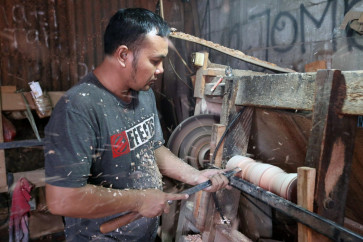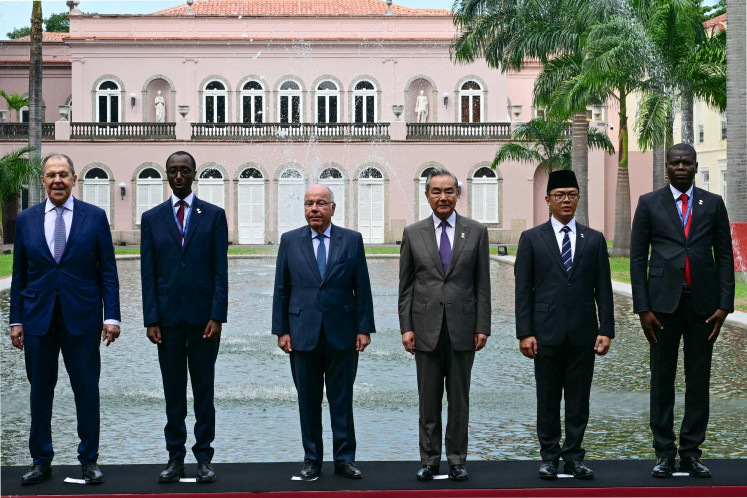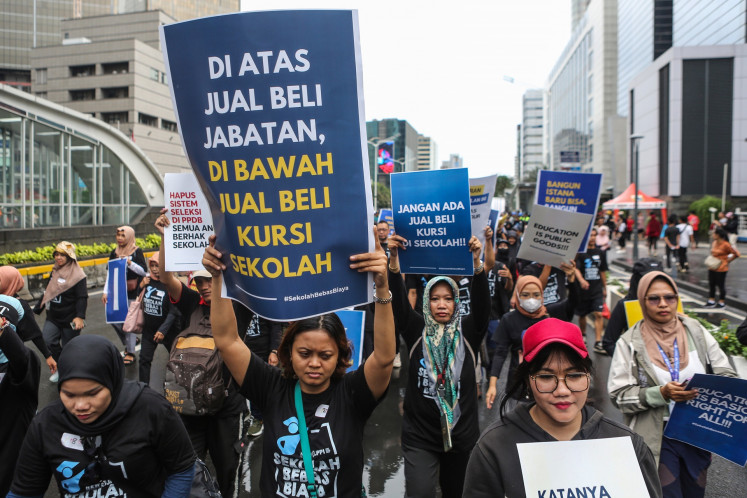Thousands of Hindus in Klaten perform Melasti at spring
Performed on Sunday, March 11, by thousands of Hindus in Klaten, the Melasti ritual was held to mark the beginning of the ceremonies prior to Nyepi (Hindu Day of Silence) which will be commemorated on March 17.
Change text size
Gift Premium Articles
to Anyone
 Hindus walk for about two kilometers from Tirta Buwana temple to Umbul Geneng in Klaten, Central Java, on Sunday, March 11. (JP/Ganug Nugroho Adi)
Hindus walk for about two kilometers from Tirta Buwana temple to Umbul Geneng in Klaten, Central Java, on Sunday, March 11. (JP/Ganug Nugroho Adi)
L
ocated in Ngrundul village, Kebonarum district in Klaten, Central Java, Umbul Geneng is a sandang (spring) where the Melasti (a Hindu ritual to cleanse the soul and nature) ceremony took place.
Performed on Sunday, March 11, by thousands of Hindus in Klaten, the Melasti ritual was held to mark the beginning of the ceremonies prior to Nyepi (Hindu Day of Silence) which will be commemorated on March 17.
Despite most devotees performing Melasti on the beach, Hindus in Klaten chose Umbul Geneng because they believe it is the place to get tirta (holy water) to purify themselves. It is also located a short distance from Tirta Buwana temple. Rituals at this place have been held since 2006, where previously they went to Ngobaran Beach in Gunungkidul, Yogyakarta.
Read also: Six hotels in Bali to enjoy Nyepi::
IGG Hendrata Wisnu, head of the Indonesian Hindu Religious Council Klaten, said Melasti is a ritual that cleanses the soul “because water is the source of life and a tool to wash the dirt away”, said Hendrata, adding that the ritual does not necessarily have to be performed at the beach.
The ritual began at 8 a.m. where Hindus walked for about two kilometers from Tirta Buwana temple to the spring. The parade was accompanied by gamelan Baleganjur. They brought offerings, including gunungan makanan (cone-shaped float of offerings), ingkung chicken, fruits and pratima (sacred effigies).
Upon arriving at the spring, after placing all of their offerings, the Hindus sat down and chanted a prayer. Some of the rituals performed at that time were Mendak Betara, Mecaru, Labuhan, as well as receiving holy water and praying together. In Labuhan, for instance, all of the offerings were floated out to the spring by the priests. After praying, all of the participants received splashes of holy water and bija (rice) as a symbol of prosperity. (wir/wen)






